Ensoniq ESQ-M, Owned from April 2001- present, bought for $124
The ESQ-M was the (ugly) rackmount version of the ESQ-1. It had a different programming interface, no keyboard, no sequencer, and no tape dump port. It's not as easy to program because it only has a 1x16 display and no buttons for direct parameter access, but it has the same voice architecture and sound. Also, it retains a CV-pedal input. It's 8-voice polyphonic and 9-part multitimbral.
There are 3 oscillators, each with 32 single-cycle waveforms which use multisamples at 8-note intervals (some waveforms use a single wave for the whole keyboard). The waveforms range from typical analog waves to instrumental samples, noise samples, formant waves, and synthesized waveforms. There are routings for 2 modulation sources and tuning parameters for each oscillator. Oscillator 1 can modulate the amplitude of oscillator 2 (not ring modulation, but close), or osc 2 can sync to osc 1. The waveforms are 8-bit and have a lo-fi sound. AM and sync can make a lot of new and interesting waveforms too. Each oscillator has its own amplifier, which can be turned on or off, and has a level control, and two modulation routings. Additionally, there is a final amplifier which has its own dedicated envelope (ENV4), and has a modulation routing for panning. The filter is 4-pole lowpass resonant filter with keyboard tracking and 2 modulation routings. Unfortunately, it doesn't self-oscillate. It sounds pretty good, though I definately prefer the filter in the DW-8000. It can be overdriven easily by the oscillators and tends to have a distorted kind of sound in general, particularly in lower cutoff ranges.
There are 3 LFOs per voice, with frequency (they don't go very fast, and on faster speeds it's obvious that they don't have a very high sampling rate), reset (restarts waveform for each keypress), human (slow random speed variation), and wave (triangle/saw/square/noise waveforms- the noise waveform isn't actually random, it's a calculated waveform like the rest, and it has the same period of the other waveforms, so it isn't very useful) controls. There is a simple envelope with initial/final/delay values, and a single modulation routing (which doesn't have an amount parameter like most mod routings). There are also 4 envelopes per voice, 4-stage with time and level paremeters for each stage (the last level is always zero, unlike some synths which have a variable final level). There are velocity and keyboard scaling controls too, and velocity can modulate the attack time. There is also a "modes" page with sync and AM parameters, and mono mode, portamento, etc. Keyboard split/layer data is stored for each patch.
Overall it sounds very good- not as thick or rich as the DW-8000 but it's much more versitile. Lots of very dynamic and unusual sounds can be made. It's a great synth because it's easy to get about any sort of synthetic sound out of it fairly quickly. And right now they can be found for pretty low prices so it's an excellent deal all around.
An SQ-80 is a great alternative, as it offers additional waveforms (expanded to 75) and a polyphonic aftertouch keyboard.
Inside, the CPU is a Motorola 6809, and a custom Ensoniq DOC chip contains the oscillators. The filters/final amplifiers are CEM3379s.
pictures:
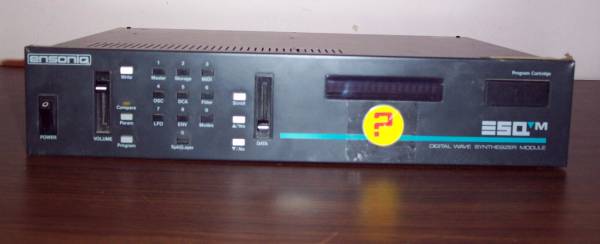
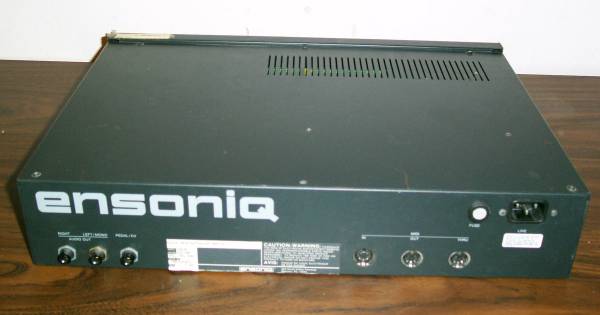
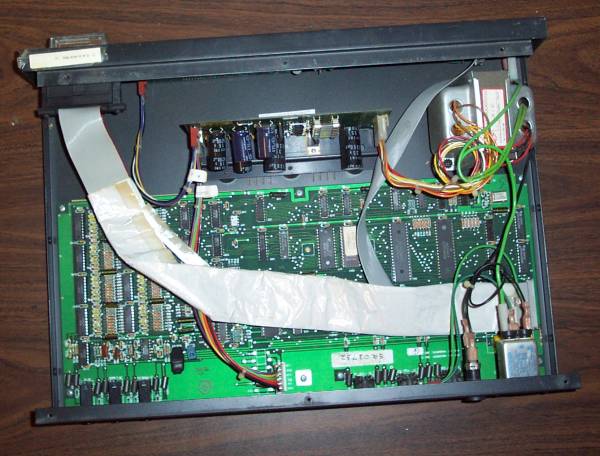
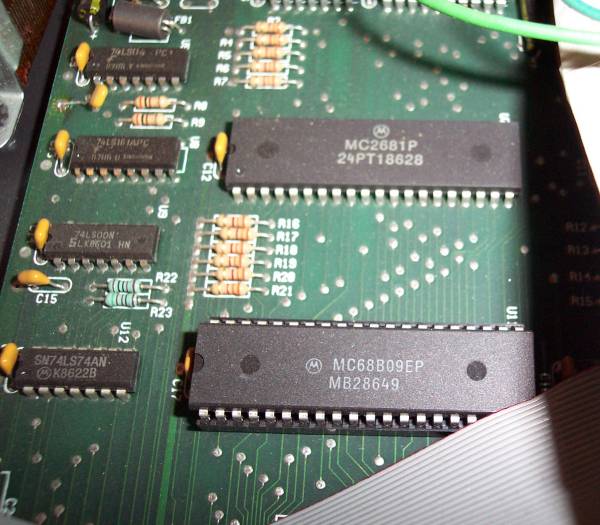
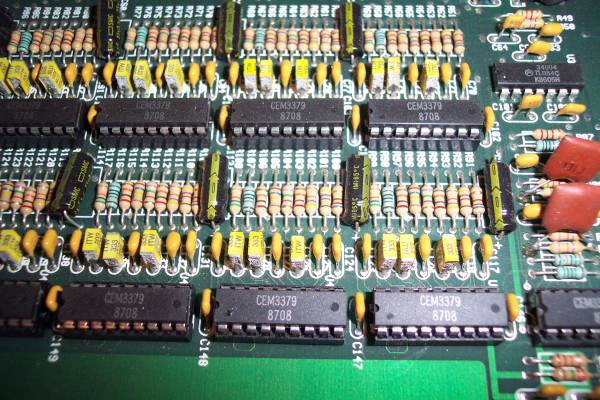
sounds:
esq-m-1- very weird oscillator sync demo.
links:
Rainer Buchty has reverse-engineered the ESQ-1 and SQ-80. His site has lots of valuable info and there's a mailing list (which I'm on) as well: [www.buchty.net] Section Ensoniq
back to synth index